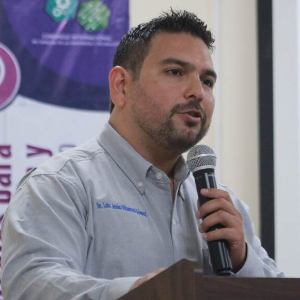Title: Antimicrobial electrospun fibrous scaffolds and their potential use as wound dressings
Abstract:
Traditional wound dressings historically served to clean, shield, and safeguard wounds from external factors. However, the right dressing choice can expedite healing, provide cost-effective care, and enhance a patient's well-being. Electrospun fibers, renowned for their varied traits like biocompatibility, biodegradability, adequate strength, and moisture retention, have gained popularity. A sought after feature is the ability to combat microorganisms. Thus, this research aims to propose a wound dressing system using functionalized electrospun nanofibers comprising poly(caprolactone)/poly(vinyl pyrrolidone) (PCL/PVP) blended with a nanocomposite of Chitosan/Silver Nanocrystals/Graphene Oxide (ChAgG). The ChAgG nanocomposite combines Chitosan from corn, silver nanocrystals sourced from garlic, and Graphene Oxide. To achieve this, the fibers underwent functionalization with a ChAgG nanocomposite solution via blending electrospinning in varying proportions (1%, 5%, and 10%). Characterization techniques such as infrared spectroscopy (FTIR), X-ray photoelectron spectroscopy (XPS), and transmission electron microscopy (TEM) determined the nanocomposite composition. Scanning electron microscopy analyzed the resulting fibrous dressings' morphology and diameter. Thermal analyses (TGA and DSC) and FTIR confirmed ChAgG's incorporation into the fiber matrix. Mechanical property assessments indicated that the 5% ChAgG formulation showed promise and suitability for wound dressing applications. Future studies might explore cytotoxicity, antimicrobial activity, and animal testing to further establish the system's effectiveness. These findings hold the potential to develop an optimized antimicrobial wound dressing poised to compete in today's market.
Audience Take Away Notes:
- The audience will learn about the basis of the electrospinning technique, the potential use of electrospun nanofibers, method for surface modification of these fibrous smart in order to promote bioactive properties such as antimicrobial, desired mechanical properties and biocompatibility
- Audience interested in biomedical devices, biomaterials and drug delivery system will be benefited



